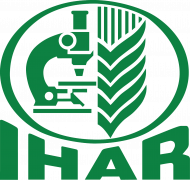Abstract
Potato brown rot disease can devastate potato production. Arbuscular mycorrhizal fungi (AMFs) are known to boost crop output. This study examines the interaction between AMFs and Ralstonia solanacearum, focusing on their effects on tuber yield and brown rot incidence. AMF increased the tuber yield by 68% (P = 0.03) in sandy soil and 30% (P = 0.047) in clay soil, along with an increase in HCO₃⁻ in sandy soil by 56% (P = 0.001) and a 24% increase in clay soil (P = 0.002). A 12% decrease in soil organic matter from 1.37 to 1.20% (P = 0.044) was recorded in sandy soil. AMF increased the pathogen populations in the rhizosphere from 3.2 to 7.8 (log CFU/g, P = 0.02) in sandy soil without a significant increase in Area Under the Disease Progression Curve. The pathogen decreased AMF colonization by 47% in sandy soil and 48% in clay soil, as well as sporulation by 63% in sandy and 57% in clay soils respectively (P < 0.05 for all). It decreased the densities of phosphate-solubilizing bacteria from 6.19 up to 5.39 (P = 0.001) in sandy soil and from 6.04 to 5.16 (P = 0.008) in clay soil. Additionally, the pathogen decreased the silicate-solubilizing bacteria from 6.94 to 5.32 (P < 0.001) in sandy and from 6.82 up to 6.17 (P = 0.04) in clay soils respectively. In conclusion, while AMF significantly increased potato yield, it is not recommended for soils infested with R. solanacearum due to the potential increase in disease risk.
Graphical Abstract















